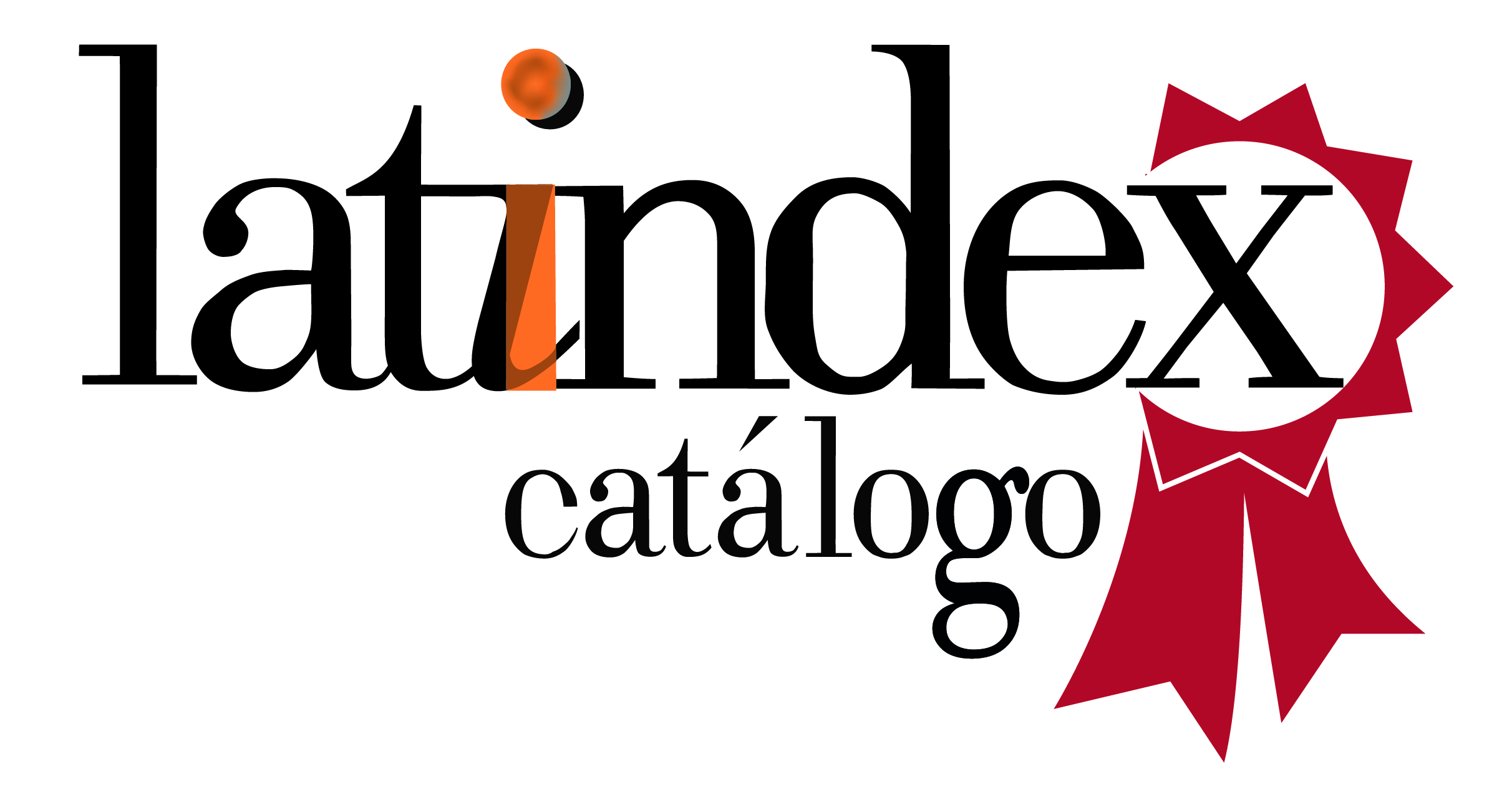Socioeconomic Inequalities in Non-Adherence to Antihypertensive Medication in Peru
DOI:
https://doi.org/10.52379/mcs.v8i3.460Keywords:
Socioeconomic Health Disparities, Health Inequality Monitoring, Health Inequities, Hypertension, Treatment Adherence and Compliance, Antihypertensive Agents, PeruAbstract
Introduction: In Peru, adherence to antihypertensive treatment ranges from 55.5% to 46.6%. Adherence decreases under adverse socioeconomic conditions. Objective: The aim of this research was to evaluate the socioeconomic inequalities in non-adherence to antihypertensive medication in Peru. Methods: A cross-sectional study was conducted through the analysis of data from the Demographic and Family Health Survey carried out in Peru between 2013 and 2023. We addressed the socioeconomic conditions of hypertensive Peruvian adults, including sex, age group, educational level, area or place of residence, and health insurance. These conditions were evaluated as sources of inequality in non-adherence to antihypertensive medication at a general level using the Concentration Index (CI) or Erreygers’ Concentration Index (ECI) among hypertensive adults over 29 years old. Results: In the 15,624 hypertensive adults older than 29 years included in the study, 86.63% were adherent to their antihypertensive medication. However, the inequality in medication non-adherence was considerable (CI: -0.259; 95%CI: -0.385 to -0.132; p<0.001). This inequality was greater among those aged 30 to 49 years (CI: -0.064; 95%CI: -0.121 to -0.008; p=0.012), those living in rural areas (CI: -0.484; 95%IC: -0.537 to -0.430; p<0.001) or outside the capital (CI: -0. 495; 95%CI: -0.569 to -0.422; p<0.001), and those with no education (CI: -0.156; 95%IC: -0.201 to -0.112; p<0.001) or only primary education (CI: -0.323; 95%IC: -0.386 to -0.260; p<0.001). In contrast, hypertensive adults with university studies had a positive CI (CI: 0.257; 95%CI: 0.199 to 0.316; p<0.001). Conclusions: Peruvian hypertensive adults residing in rural areas or outside the capital, and those with low educational level, showed greater inequality in adherence to antihypertensive medication.
Downloads
References
WHO. Hypertension. 2023. URL
Brown MT, Bussell JK. Medication Adherence: WHO Cares? Mayo Clin Proc. 2011;86(4):304-14. https://doi.org/10.4065/mcp.2010.0575
PAHO. Risks of not adhering to antimicrobial treatment guidelines. 2021. URL
Parra-Gómez LA, Galeano L, Chacón-Manosalva M, Camacho P.Barriers to the knowledge, treatment and control of arterial hypertension in Latin America: a scoping review Rev Panam Salud Pública. 2023;47:1. https://doi.org/10.26633/rpsp.2023.26
Leong DP, Joseph PG, McKee M, Anand SS, Teo KK, Schwalm JD, et al. Reducing the Global Burden of Cardiovascular Disease, Part 2: Prevention and Treatment of Cardiovascular Disease. Circ Res. 2017;121(6):695-710. https://doi.org/10.1161/circresaha.117.311849
Ortega J, Ramón S, Astudillo E, Ávila S, Vásquez X, Solórzano G, et al. Adherence to the treatment of arterial hypertension in older adults. ZENODO. 2021. https://zenodo.org/record/4484355
WHO. World Health Organization guidelines on the pharmacological treatment of hypertension: policy implications for the Region of the Americas. 2021. https://iris.paho.org/handle/10665.2/55963
Pocohuanca-Ancco L, Villacorta J, Hurtado-Roca Y. Factors associated with non-adherence to antihypertensive pharmacological treatment in patients of a social security hospital. Rev Cuerpo Méd Hosp Nac Almanzor Aguinaga Asenjo. 2021;14(3):316-21. https://doi.org/10.35434/rcmhnaaa.2021.143.1252
Martín AL. Public health implications of poor therapeutic adherence. Rev Cuba Salud Pública. 2006;32(3). URL
Herrera-Añazco P, Pacheco-Mendoza J, Valenzuela-Rodríguez G, Málaga G. Self-knowledge, adherence to treatment and control of high blood pressure in Peru. Rev. perú. med. exp. salud publica. 2017;34(3). https://doi.org/10.17843/rpmesp.2017.343.2622
Sandoval D, Chacón J, Muñoz R, Henríquez Ó, Koch E, Romero T.Influence of psychosocial factors on adherence to antihypertensive pharmacological treatment: Results from a cohort of the Cardiovascular Health Program of the Metropolitan Region, Chile. Rev Médica Chile. 2014;142(10):1245-52. https://doi.org/10.4067/s0034-98872014001000003
Real Delor R, Gamez Cassera MA, Redes Zeballos ML, Martínez Urizar M, Aguilera Iriarte GA, Oviedo Velázquez G, et al. Adherence to antihypertensive treatment in adults at Family Health Units in Paraguay: a multicenter study. Rev Salud Publica Parag. 2021;11(2):35-41. https://doi.org/10.18004/rspp.2021.diciembre.35
Sotomayor-Perales JL, Delgado-Flores CJ, Carrión-Arcela JP, Galván-Barrantes DA, Mejía-Azañero J, Núñez-Osorio L, Montes-Alvis J, Goicochea-Lugo S, Taype-Rondan A, Salvador-Salvador S, Santos-Sánchez V. Guía de práctica clínica para el manejo de la Hipertensión arterial esencial en el Seguro Social del Perú (EsSalud). Rev. Cuerpo Med. HNAAA. 2024;17(1). https://doi.org/10.35434/rcmhnaaa.2024.171.1969
Ministry of Health. Clinical Practice Guide for the Prevention and Control of Hypertensive Disease at the First Level of Care. 2011. URL
Holguín L, Correa D, Arrivillaga M, Cáceres D, Varela M. Adherence to arterial hypertension treatment: Effectiveness of biopsychosocial intervetion program. Univ Psychol. 2006;5(3):535-48. URL
Miller TA. Health literacy and adherence to medical treatment in chronic and acute illness: A meta-analysis. Patient Educ Couns. 2016;99(7):1079-86. https://doi.org/10.1016/j.pec.2016.01.020
National Institute of Statistics and Informatics. Peru: Population Estimates and Projections by Department, Sex and Five-Year Age Groups. 2009. URL
Gorostidi M, Gijón-Conde T, de la Sierra A, et al. 2022 Practice guidelines for the management of arterial hypertension of the Spanish Society of Hypertension. Hipertens Riesgo Vasc. 2022;39(4):174-194. https://doi.org/10.1016/j.hipert.2022.09.002
Regidor E. Measures of health inequalities: part 2. J Epidemiol Community Health. 2004;58(11):900-3. https://doi.org/10.1136/jech.2004.023036
Contoyannis P, Hurley J, Walli-Attaei M. When the technical is also normative: a critical assessment of measuring health inequalities using the concentration index-based indices. Popul Health Metr. 2022;20(1):21. https://doi.org/10.1186/s12963-022-00299-y
Espinoza-Marchan H, Alvarez-Risco A, Solís-Tarazona Z, Villegas-Chiguala J, Zavaleta-Calderón A, Astuvilca-Cupe J, et al. Access to medications in Comprehensive Health Insurance (SIS) patients with diabetes mellitus and/or high blood pressure in Peru. Rev OFIL. 2021;31(1):71-7. URL
INEI. Access to health insurance: National Institute of Statistics and Informatics. 2020. URL
Paniz VMV, Fassa AG, Facchini LA, Bertoldi AD, Piccini RX, Tomasi E, et al. Access to continuous-use medication among adults and the elderly in South and Northeast Brazil. Cad Saude. 2008;24(2):267-80. https://doi.org/10.1590/s0102-311x2008000200005
Miranda VIA, Schäfer AA, Tomasi CD, Soratto J, de Oliveira Meller F, Silveira MPT. Inequalities in access to medicines for diabetes and hypertension across the capitals in different regions of Brazil: a population-based study. BMC Public Health. 2021;21(1):1242. https://doi.org/10.1186/s12889-021-11279-6
Langabeer JR, Henry TD, Perez Aldana C, DeLuna L, Silva N, Champagne-Langabeer T. Effects of a Community Population Health Initiative on Blood Pressure Control in Latinos. J Am Heart Assoc. 2018;7(21):e010282. https://doi.org/10.1161/jaha.118.010282
Tarraf W, Rodríguez CJ, Daviglus ML, Lamar M, Schneiderman N, Gallo L, et al. Blood Pressure and Hispanic/Latino Cognitive Function: Hispanic Community Health Study/Study of Latinos Results. J Alzheimers Dis JAD. 2017;59(1):31-42. https://doi.org/10.3233/jad-170017
Foster M, Etchin A, Pope C, Hartmann CW, Emidio O, Bosworth HB. The Impact of COVID-19 on Hypertension and Hypertension Medication Adherence Among Underrepresented Racial and Ethnic Groups: A Scoping Review. Curr Hypertens Rep. 2023;25(11):385-94. https://doi.org/10.1007/s11906-023-01262-4
INEI. The 72.5% of the country's population aged 6 and over accessed the Internet in the first quarter of 2022. 2022. URL
Bernabe-Ortiz A, Pauschardt J, Diez-Canseco F, Miranda JJ. Sustainability of mHealth Effects on Cardiometabolic Risk Factors: Five-Year Results of a Randomized Clinical Trial. J Med Internet Res. 2020;22(4):e14595. https://doi.org/10.2196/14595
Glynn LG, Murphy AW, Smith SM, Schroeder K, Fahey T. Interventions used to improve control of blood pressure in patients with hypertension. Cochrane Database Syst Rev. 2010;(3):CD005182. https://doi.org/10.1002/14651858.cd005182.pub4
Fahey T, Schroeder K, Ebrahim S. Interventions used to improve control of blood pressure in patients with hypertension. Cochrane Database Syst Rev. 2006;(4):CD005182. https://doi.org/10.1002/14651858.cd005182.pub3
Ng N, Carlberg B, Weinehall L, Norberg M. Trends of blood pressure levels and management in Västerbotten County, Sweden, during 1990-2010. Glob Health Action. 2012;5. https://doi.org/10.3402/gha.v5i0.18195
Gavrilova A, Bandere D, Rutkovska I, Šmits D, Mauri?a B, Poplavska E, et al. Knowledge about Disease, Medication Therapy, and Related Medication Adherence Levels among Patients with Hypertension. Medicina (Mex). 2019;55(11):715. https://doi.org/10.3390/medicina55110715
Mohanty SK, Pedgaonkar SP, Upadhyay AK, et al. Awareness, treatment, and control of hypertension in adults aged 45 years and over and their spouses in India: A nationally representative cross-sectional study. PLoS Med. 2021;18(8):e1003740. https://doi.org/10.1371/journal.pmed.1003740
Abrahamowicz AA, Ebinger J, Whelton SP, et al. Racial and Ethnic Disparities in Hypertension: Barriers and Opportunities to Improve Blood Pressure Control. Curr Cardiol Rep. 2023;25(1):17-27. https://doi.org/10.1007/s11886-022-01826-x
Rosas-Chavez G, Romero-Visurraga CA, Ramirez-Guardia EN, et al. The degree of health literacy and adherence to treatment in patients with arterial hypertension in a national hospital in Lima, Peru. Rev Peru Med Exp Salud Pública. 2019;214-21. https://doi.org/10.17843/rpmesp.2019.362.4279
Lötsch F, Auer-Hackenberg L, Groger M, Rehman K, Morrison V, Holmes E, et al. Adherence of patients to long-term medication: a cross-sectional study of antihypertensive regimens in Austria. Wien Klin Wochenschr. 2015;127(9):379-84. https://doi.org/10.1007/s00508-015-0782-y
Chamber of Commerce of Lima. Economic report on the Unemployment Rate: Chamber of Commerce. 2017. URL
Crowley MJ, Grubber JM, Olsen MK, Bosworth HB. Factors Associated with Non-Adherence to Three Hypertension Self-Management Behaviors: Preliminary Data for a New Instrument. J Gen Intern Med. 2013;28(1):99-106. https://doi.org/10.1007/s11606-012-2195-1
Natarajan N, Putnam W, Van Aarsen K, et al. Adherence to antihypertensive medications among family practice patients with diabetes mellitus and hypertension. Can Fam Physician. 2013;59(2):e93-100. URL
Castro MC, Ticona CV, Rayme MI, et al. Lifestyles associated with treatment adherence in hypertensive patients. ZENODO. 2021. https://doi.org/10.5281/zenodo.5227306
Dalal JJ, Kerkar P, Guha S, et al. Therapeutic adherence in hypertension: Current evidence and expert opinion from India. Indian Heart J. 2021;73(6):667-73. https://doi.org/10.1016/j.ihj.2021.09.003
Arrivillaga M, Cáceres de Rodríguez D, Correa D, Holguín LE, Varela MT. ¿Puede una intervención biopsicosocial reducir los niveles de presión arterial? MedUBA. 2006;9(1):20-7. URL
Pacheco-Romero J. High blood pressure in different ages of women. An Fac Med. 2010;71(4):257-64. https://bit.ly/3x2qFpF
Múnera-Echeverri AG, Muñoz-Ortiz E, Ibarra-Burgos JA, et al.High blood pressure and pregnancy. Rev Colomb Cardiol. 2021;28(1):3-13. https://doi.org/10.24875/RCCAR.M21000002
Tagle R, Acevedo M, Valdés G. Hypertension in women. Rev Med Chil. 2013;141(2):237-47. https://doi.org/10.4067/s0034-98872013000200014
Lomelí C, Rosas M, Mendoza-González C, Lorenzo JA, Pastelín G, Méndez A, et al. Hypertension in women. Arch Cardiol Mex. 2008;78(Suppl 2):S2-98-103. URL
Urrea JK. Arterial hypertension in women. Rev Colomb Cardiol. 2018;25(Supplement 1):13-20. https://doi.org/10.1016/j.rccar.2017.12.003
Mancia G, Laurent S, Agabiti-Rosei E, et al. Reappraisal of European guidelines on hypertension management: a European Society of Hypertension Task Force document. J Hypertens. 2009;27(11):2121-58. https://doi.org/10.1097/hjh.0b013e328333146d
Ghelfi AM, Staffieri GJ. Arterial hypertension in non-pregnant women of fertile age. Med Clínica. 2022;159(2):101-5. https://doi.org/10.1016/j.medcli.2022.02.009
Mendoza Reyes R. Therapeutic adherence in patients with chronic non-communicable diseases: diabetes, hypertension and obesity. Rev Med Ética. 2021;32(4):897-945. https://doi.org/10.36105/mye.2021v32n4.01
Düsing R. Overcoming barriers to effective blood pressure control in patients with hypertension. Curr Med Res Opin. 2006;22(8):1545-53. https://doi.org/10.1185/030079906x120995
García Cueto E, Cueto Espinar A, Fernández Rodríguez S, et al. Categorization of psychosocial factors associated with antihypertensive drug compliance. Psicothema. 2003;15(1):82-7. URL
Moreno MI. Effectiveness of a high blood pressure self-management intervention in improving therapeutic inertia and adherence to antihypertensive medications. ADAMPA pragmatic clinical trial. 2021. URL
Downloads
Published
Issue
Section
License
Copyright (c) 2024 Claudio Intimayta-Escalante, Lynn A. Quintana-Garcia

This work is licensed under a Creative Commons Attribution 4.0 International License.











